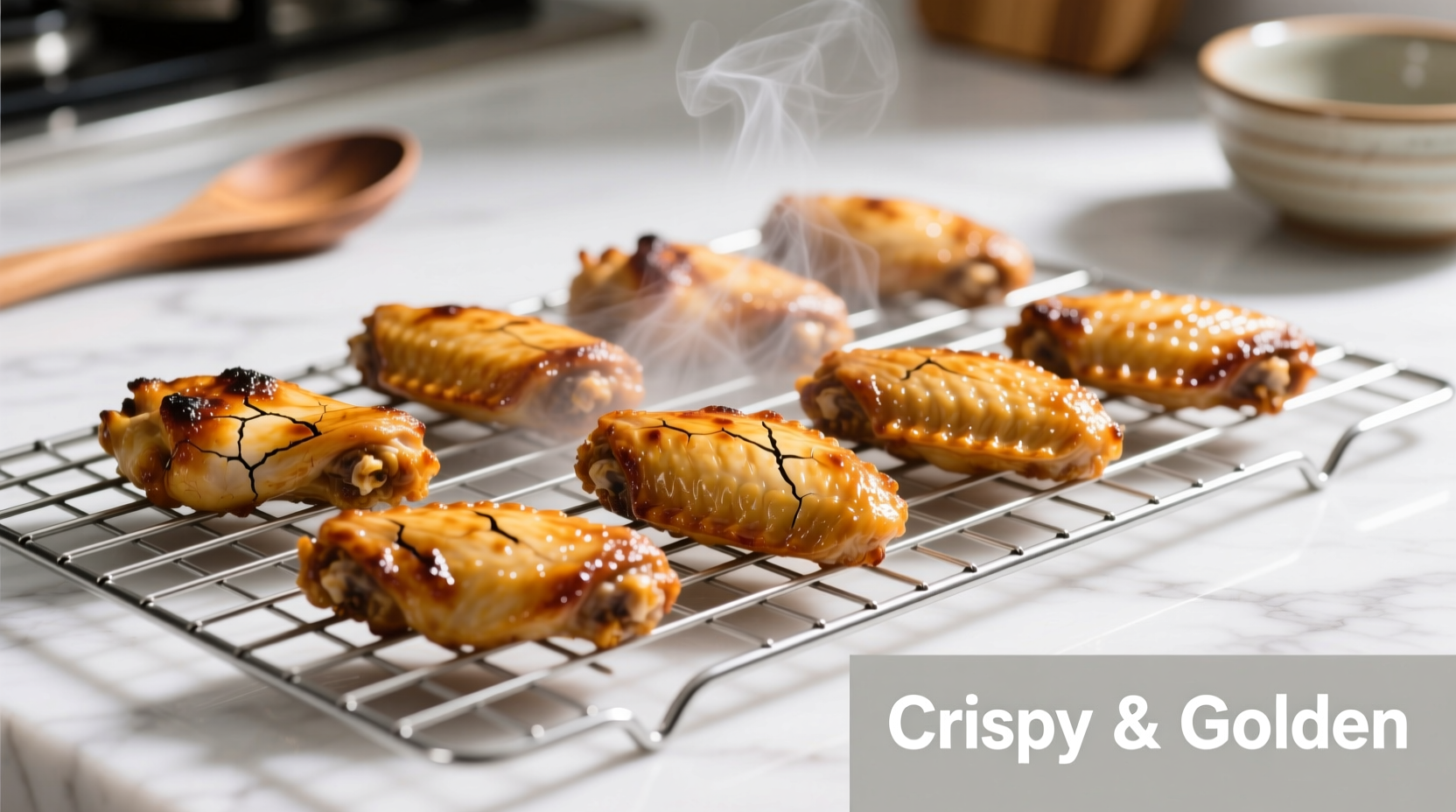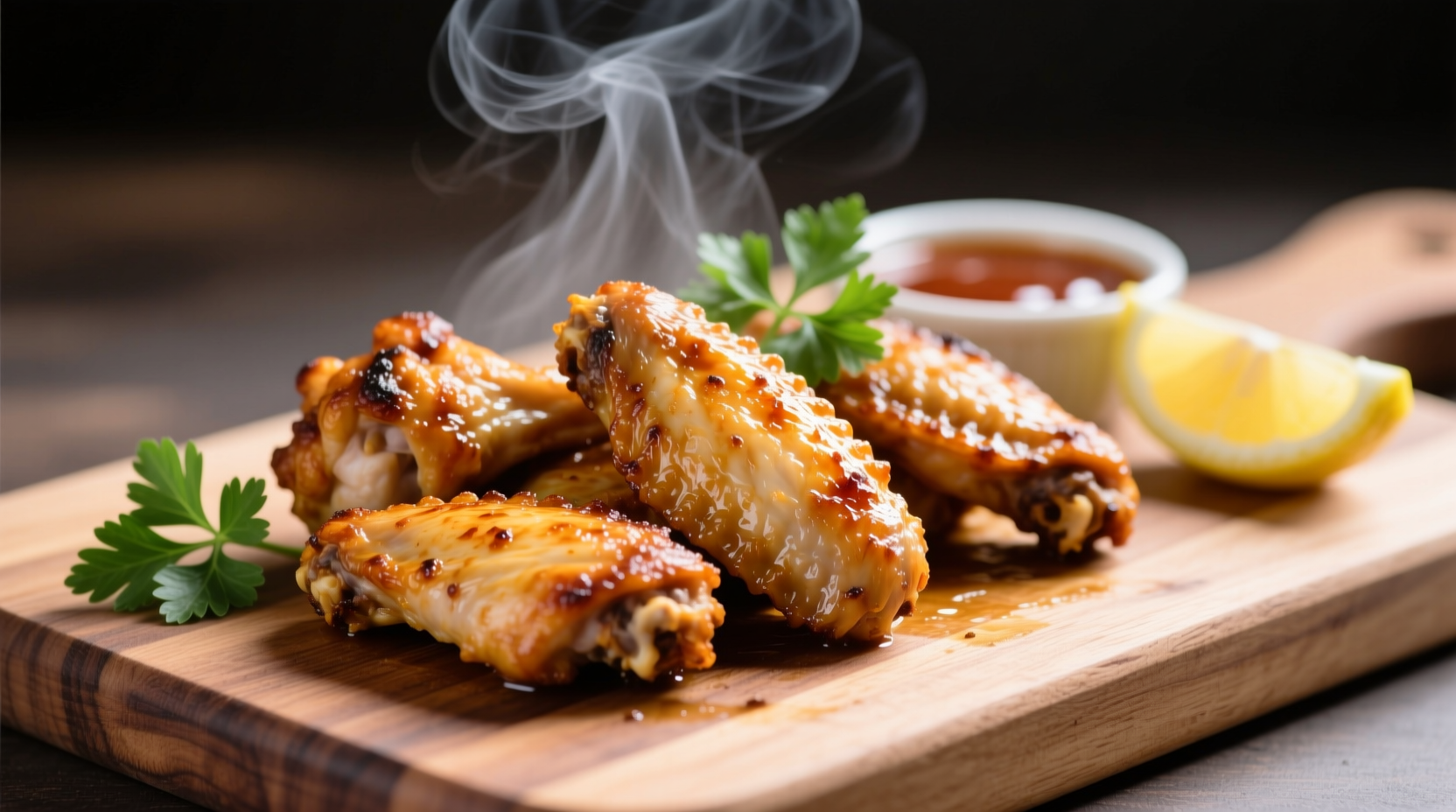Nothing beats the satisfaction of serving perfectly crispy oven-baked chicken wings that are cooked to perfection. As a chef who's worked in both Michelin-starred restaurants and casual eateries, I've perfected the timing and techniques that transform ordinary wings into extraordinary finger food. In this guide, you'll learn exactly how long to cook chicken wings in the oven for optimal crispiness while maintaining food safety standards.
The Science Behind Perfectly Cooked Wings
Understanding the relationship between oven temperature and cooking time is crucial for achieving that golden-brown, crispy exterior without drying out the meat. Chicken wings contain more skin and bone than meat, which affects how they cook compared to other chicken parts.
| Oven Temperature | Total Cooking Time | Flip Time | Result Profile |
|---|---|---|---|
| 375°F (190°C) | 50-55 minutes | 25 minutes | Milder crispiness, more tender |
| 400°F (200°C) | 45-50 minutes | 22-25 minutes | Optimal balance of crisp and juicy |
| 425°F (218°C) | 40-45 minutes | 20 minutes | Extra crispy, slightly drier |
According to the USDA Food Safety and Inspection Service, poultry must reach an internal temperature of 165°F (74°C) to be safe for consumption. This critical food safety standard applies to all chicken products, including wings. Relying solely on cooking time isn't sufficient—always verify with a meat thermometer.
Step-by-Step Cooking Process
Preparation (10 minutes)
Dry wings thoroughly with paper towels before seasoning. Moisture is the enemy of crispiness. Toss with 1 tablespoon baking powder per pound of wings (not baking soda) to enhance browning without altering flavor. Season with salt and your preferred spices.
First Half of Cooking (22-25 minutes)
Arrange wings in a single layer on a wire rack set over a baking sheet. This elevates them for even air circulation. Bake at 400°F until the skin begins to render fat and turn golden. The wire rack prevents wings from sitting in their own grease.

Flipping Technique (2 minutes)
Using tongs, carefully flip each wing to expose the skin side that was facing down. This ensures even crisping on all surfaces. Avoid piercing the skin to prevent juice loss.
Second Half of Cooking (22-25 minutes)
Return wings to the oven until deeply golden and crispy. The skin should pull away slightly from the bone, and the meat should feel firm but not hard when pressed.
Food Safety Essentials You Can't Ignore
While visual cues help, they're not reliable indicators of doneness. The USDA emphasizes that visual inspection alone cannot confirm chicken is safe to eat. Always use an instant-read thermometer inserted into the thickest part of the wing, avoiding bone contact.
Food safety researcher Dr. Mindy Brashears, former USDA Deputy Under Secretary for Food Safety, states: "Poultry must reach 165°F internally to destroy harmful bacteria like salmonella and campylobacter." This temperature kills pathogens instantly, ensuring your wings are both delicious and safe.
Troubleshooting Common Wing Problems
Soggy Wings Solution
If your wings aren't crispy:
- Pat wings drier before seasoning
- Increase oven temperature to 425°F
- Extend cooking time by 5-10 minutes
- Use a convection oven setting if available
Burnt Edges Fix
When wing tips darken too quickly:
- Reduce oven temperature to 375°F
- Cover tips with foil halfway through cooking
- Arrange wings with tips toward the oven center
Variations for Different Results
Convection Oven Adjustment
Convection ovens circulate hot air, reducing cooking time by about 25%. For convection ovens:
- Reduce temperature by 25°F
- Shorten total time by 5-8 minutes
- Check for doneness 5 minutes early
Low-and-Slow Method
For fall-off-the-bone tenderness:
- Bake at 325°F for 60-70 minutes
- Finish with 5 minutes under the broiler
- Ideal for saucy wings like buffalo
Pro Tips for Restaurant-Quality Results
Professional kitchens achieve perfect wings through precise timing and technique. Here's how to replicate their success at home:
- Refrigerate wings uncovered for 4-12 hours before cooking to dry the skin
- Use a rimmed baking sheet lined with foil for easy cleanup
- Let wings rest 5 minutes after cooking to redistribute juices
- Apply sauce immediately after cooking for best adhesion
When to Adjust Standard Timing
Certain conditions require timing adjustments:
- Frozen wings: Add 10-15 minutes to total time
- Extra-large wings: Check 5 minutes later than standard time
- High-altitude cooking: Increase temperature by 25°F
- Humid environments: Extend cooking time by 5 minutes
Serving Recommendations
For the best eating experience:
- Serve immediately while skin is at peak crispness
- Pair with celery sticks and blue cheese dressing
- Offer multiple sauce options on the side
- Use a wire rack instead of plates to maintain crispiness











 浙公网安备
33010002000092号
浙公网安备
33010002000092号 浙B2-20120091-4
浙B2-20120091-4